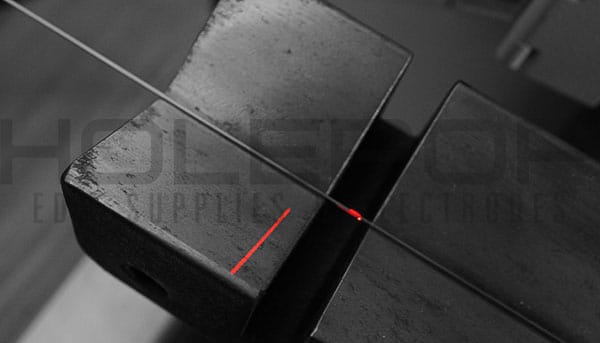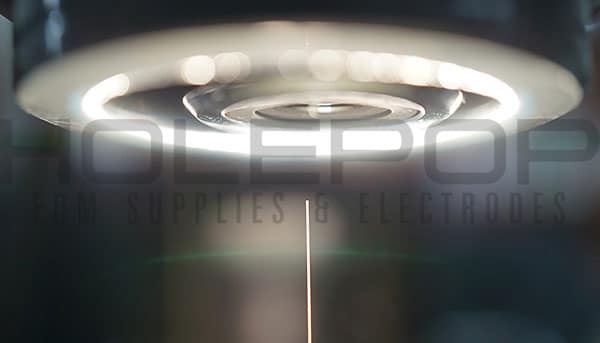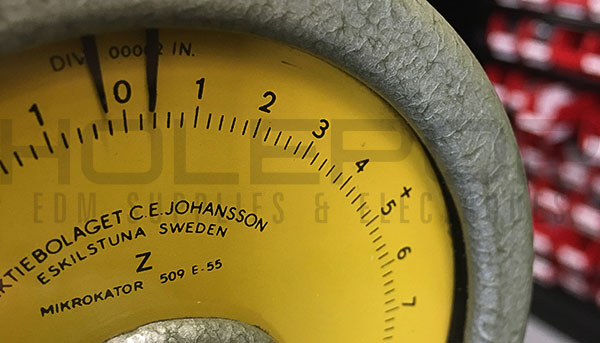The Constant Pursuit of Quality
Any experienced engineer is aware of the constraints imposed by the real world on a design. Nevertheless, this is no constraint that can’t be largely erased by quality components. Procuring quality components, however, is not as simple as it may seem. From sourcing to production to shipment, there are many factors that go into the successful delivery of a quality part, many of which may not be obvious. Though an important part of the process, a quality guarantee goes much further than quality assurance itself. For instance, a shipment of individually inspected, in tolerance electrodes that arrives late cannot be said to be in accordance with quality standards. This is why our focus on quality is not narrow. The achievement of true quality requires a holistic approach, where all aspects of the business are assumed to contribute to quality, even when this is not obvious.
Metrological Equipment and Capabilities
Though everything matters when it comes to quality, all of our efforts are centered around thorough quality assurance, which always starts with inspection. Inspection varies depending on the consumable, but is always done with state-of-the-art and traceably certified, calibrated equipment. All stock is subject to a minimum level of inspection, and customers may request more thorough inspection if they desire.
-
Laser Micrometer
Our laser micrometers give us the capability to measure the outer diameters of electrodes to 0.000001” (0.00001 mm). Multiple laser micrometers and digital data collection allow for extremely efficient inspection, enhancing our ability to inspect large orders more thoroughly. Retrofitting our micrometers with specialized V-blocks give electrodes a stable place to rest, allowing us to make the most of their accuracy.
-
Microscopes
Our digital microscopes allow us to examine the internal characteristics of electrodes. With the importance of an electrode’s flow characteristics, the ability to measure inner diameter, wall thickness, and concentricity provides a better picture of potential electrode performance. As with our laser micrometers, multiple microscopes greatly increase efficiency, allowing us to inspect a larger proportion of each order.
-
Johansson Mikrokator
An especially finely tuned mechanical comparator, a Johansson Mikrokator measures deviation of a surface from a chosen thickness to an accuracy of 0.00001” (0.0001 mm). For copper-tungsten foil inspection, this tool allows us to effectively map out the regions of a foil that fall within tolerance.
Everything Else
As important as inspection may be, all peripheral activities contribute to the overall quality of our products, and so general administration of the business falls under the quality control umbrella. With a new digital stocking system, efficiency has been greatly improved, while opportunities for human error have been reduced. Likewise, our digital data collection system nearly doubles inspection speed, and ensures that data is backed up and readily accessible, allowing for full traceability. We have systematically standardized commonplace procedures, such as inspection, which also increases speed while reducing error. Our suppliers are subject to scrutiny, and supplier redundancy is always maintained if a supplier ever falls short. These are just a few of the things we have done to improve our products. In general, we have cultivated a culture that shuns complacency, is conscientious, and on the lookout for potential shortfalls in all domains of the business.
Continual Improvement
So what happens when a shortfall is identified? The problem is mitigated and its effects isolated, and potential actionable solutions to the problem are formulated, then implemented. This is what we call continual improvement, arguably the most important aspect of our quality assurance process. And with our holistic approach to quality, nothing is off limits. When we meet a quality goal, we set a more ambitious one. Continual improvement is not a lazy way to meet the minimum requirements of our customers, but a philosophy that sees no horizon, that recognizes that the pursuit of quality never ends.




